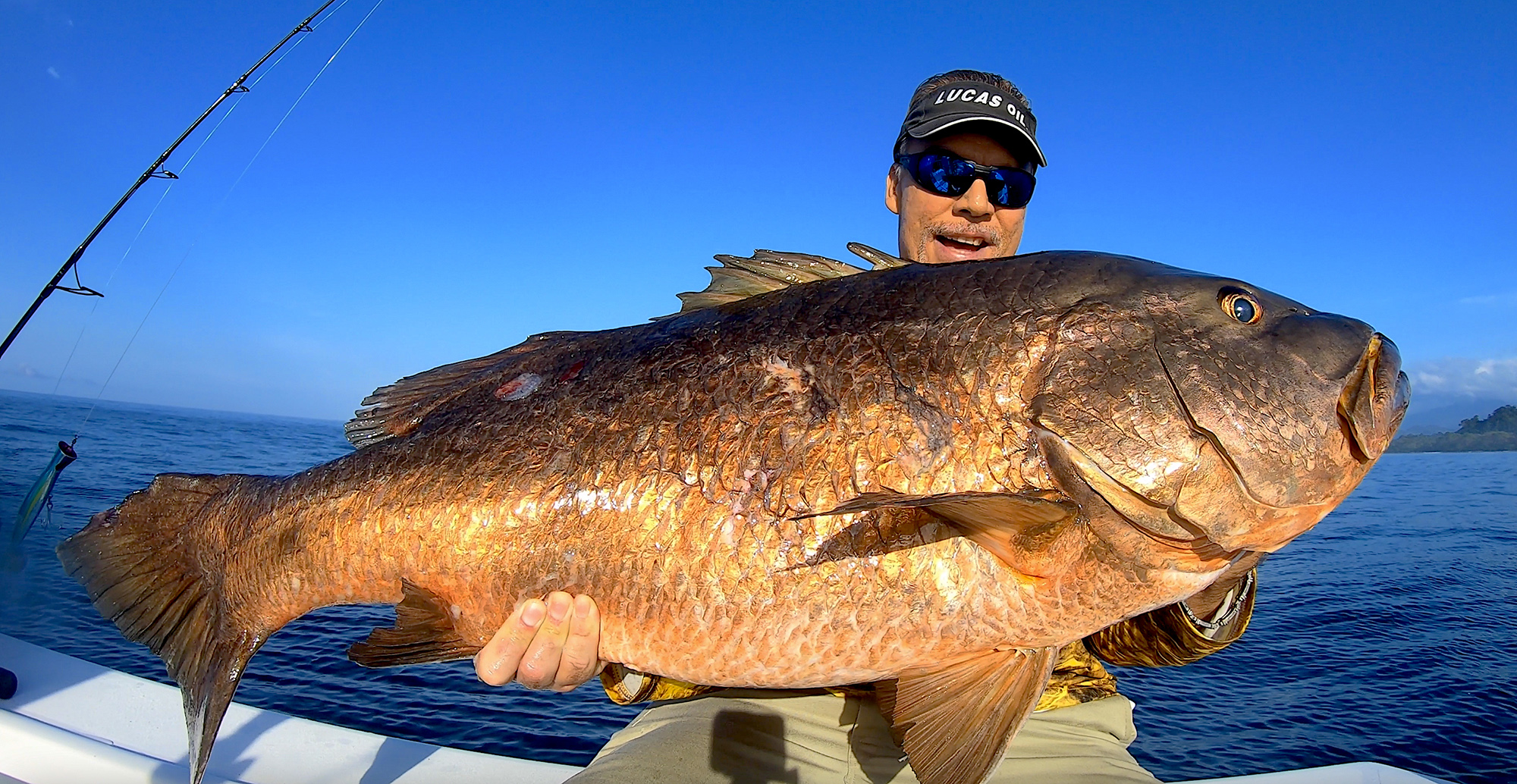What is a “big” fish? If you think about it, it’s not an easy question to answer because “big” is relative. If all you’ve ever landed are bluegills, a 5-pound bass is monstrous. If you play offshore, a 1,000-pound black marlin might qualify. What doesn’t change, however, are the elements of battle that bring that fish to hand, especially if you weren’t expecting to hook something so large.
My friend and host of the BigWater Adventures TV show, Mark Davis, has traveled the world filming fish that can physically hurt you. He genuinely enjoys targets that will test his strength, but during a long career in the fishing industry, he’s caught just about everything. Davis is also a straight shooter, so when I asked him for his best advice on beating a big fish—whatever that means to you — he didn’t hold back. His tips are practical, but also overlooked by many anglers. So, whether you’re booking your first offshore trip while you’re in Mexico with the family or you just got schooled by a salmon bigger than any you’ve ever hooked in the past, Davis’s input will get you in fighting form for the next bout.
You can listen to this episode on Apple, Spotify, or wherever you get your podcasts.
Keep Your Head Straight
Preparation for fighting a big fish starts before you ever get the bite. Of course, that’s very easy when the mission at outset is to hook true monsters. But what if it’s not? What if you were just headed to the river for smallmouths and a 40-inch muskie grabs that spinnerbait? You need to keep your head clear and stay cool.
“The first thing you’re going to want to do is take a look at the environment that you’re in,” says Davis. “Before a big fish is ever on the line, you should ask yourself if there are possible pitfalls you need to consider. Am I underneath a bridge span I’ll have to turn the fish away from? If I get a big fish on, am I going to have to maneuver around other lines that are out? Are there obstructions in the water it can run for? This seems obvious but a lot of fights with big fish are over before they start because people panic.”
Davis is right. Social media is chock full of videos of surprised anglers hooking unexpected giants and chaos ensues, often because they’re so stunned by what they’ve hooked that they essentially freeze. Regardless of whether we’re talking about a 30-pound catfish when you’re used to catching 5-pounders or a 200-pound tuna when all you’ve ever fought are schoolie striped bass, you need to be anticipating what the fish might do next and counteract it by moving or clearing a path if necessary.
Know When to Bring the Heat
According to Davis, one of the hardest elements of fighting big fish to master is knowing when you’ve reached what he calls the “red line.” Naturally, the idea is to tire a big fish out so you can land it easily. There are, however, times when you have to put on the brakes even if it costs you the fish. This is especially true if your outfit is under-gunned.
“Where are you willing to draw the line? Let’s use tarpon and snook as examples,” Davis says. “If that fish is running closer and closer to the mangroves and you haven’t been able to turn it, or your tarpon is running toward the bridge piling and you can’t stop it, you have to know when to over-pressure the fish. Most of the time you’re going to lose it anyway if it gets to where it wants to go, so you have to be willing to make that call to tighten the drag or put on more pressure.”
Davis is no stranger to scenarios where you’re just “handcuffed,” as he puts it. It’s happened to him offshore where a light trolling outfit intended for sailfish gets hit by a blue marlin. Short of chasing it miles in the boat potentially for hours, there’s not much you can do but nudge the drag tighter and hope. But tying back his first point about a plan, if you’re leveled headed, putting the heat on at the “red line” should be calculated, not an erratic snap decision.
Big (Calm) Finish
Davis likes to say, “big fish are never lost, they’re given away.” He’s referring to the end game—the most common point in a fight for something to go wrong. Though anything can happen, it’s often a desire to just get it over with that costs angler fish just shy of the net. This is especially true after a drawn-out, physically taxing battle.
“I’ve seen some heartbreaks in my career, and unfortunately I’ve been on the receiving end of some,” says Davis. “Looking back on them, most of the time it came down to putting up a good fight for an hour or half hour and losing composure right at the end when the fish was close. If these anglers had just stayed cool for a few more minutes, it wouldn’t have happened. You might have put too much pressure on a skin-hooked fish at the last second and one headshake cost you the fish. It could be any number of things, but impatience will get you.”
Davis wisely points out that during any fight with a big fish, the more you’re winning the calmer you should become. In other words, if you’ve already the wore the tuna down enough to get it in gaff range, you’re beating the fish. You’re ahead, so there’s no reason to get frantic again.
Read the full article here





